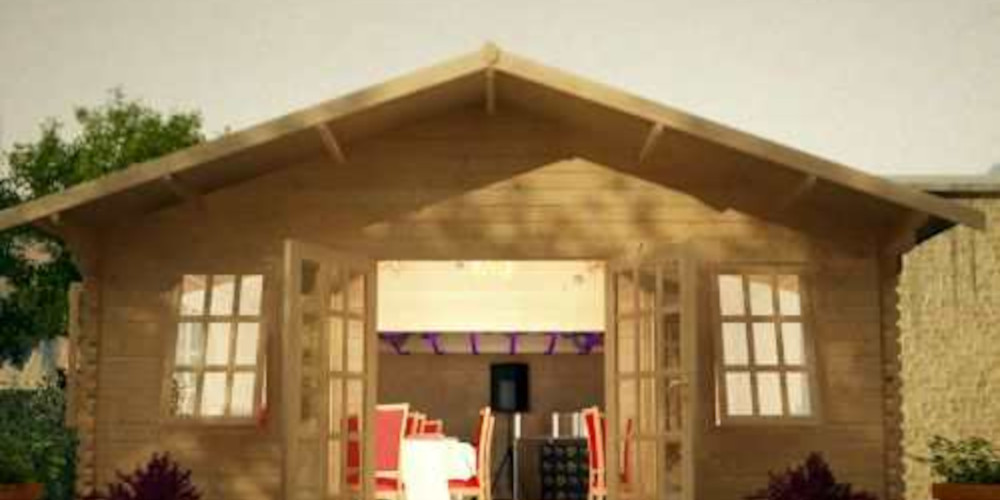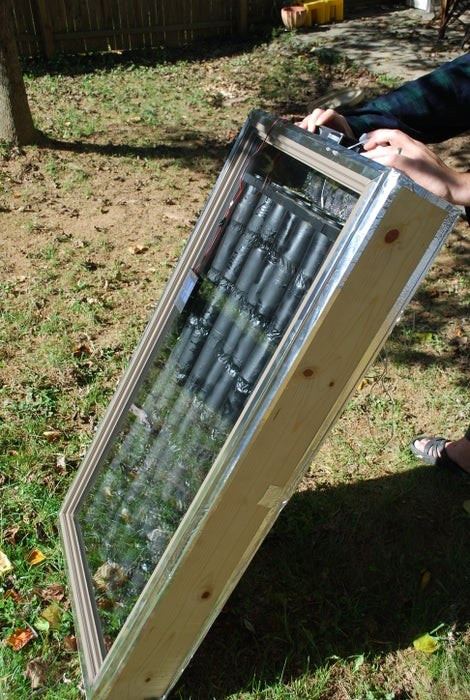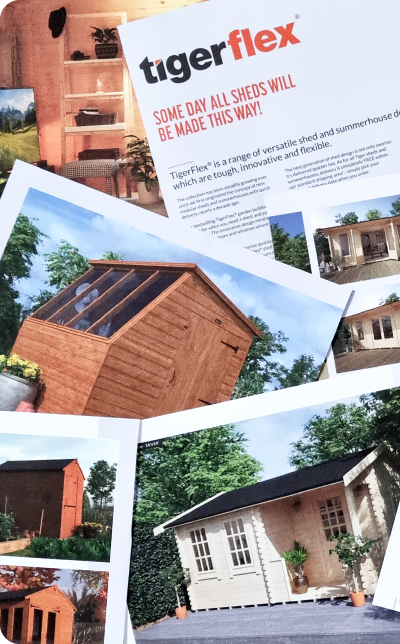How to Heat Your Shed, Log Cabin or Summerhouse
Published: 02/09/2021

There’s no doubt sheds can get chilly – especially during winter (brrr!) So, it’s no surprise you’re wondering how to heat your shed.
How can I make my shed warmer?
We’re writing this article to help you stay warm in your garden building. So, whether you’re spending time in your workshop, relaxing in your shed, or even living in it, this is the post for you. We start by listing the best types of shed heater – taking you through what each one has to offer. We also aim to answer your questions about shed heating. Topics and questions we cover include the following:
- The best shed heaters
- How do you keep a shed warm without electricity?
- How to heat a shed for free
- How do I keep my potting shed warm?
- Is there such a thing as a battery-powered heater?
Note: The information in this post also applies to summerhouses or log cabins just as much as sheds. So, here’s the information you need for heating a shed in winter (or whenever it gets cold!):
5 best types of shed heater
So, what’s the best shed heater? Well, that depends on your needs – there’s no one-size-fits-all solution. Maybe you’re looking for a cheap-to-run shed heater, or perhaps money’s no object and you want the best overall. Or maybe you’re looking for the best option for something specific, such as a method for heating a shed for animals, for example. Whatever your situation, there’s a shed heater for you. Some of these options include electrical devices, but number one and number five show you how to heat a shed WITHOUT electricity…
1. Shed insulation

You may be surprised to see insulation on this list – perhaps you were expecting to read about an assortment of gadgets that actively generate heat in some way. And yes, insulation is not what you likely thought of when you looked up ways to heat your shed. But here's why we included it...
How do you keep a shed warm without electricity? The best non-electric shed heater
If you’re thinking about heating an uninsulated shed, you’ll be throwing money away. Why? Because, much like heating any uninsulated building, it won’t be efficient – meaning heat can escape more easily and any electric or battery-powered heater would have to work harder. This, in turn, will mean the heater uses more energy and cost more in electricity or batteries. So, before you think about finding cheap heating your shed, think about insulating it – it’ll be cheaper in the long run! So now we’ve established that heating an insulated shed is the best way to go, you need to figure out how to insulate your garden building. Luckily, our post on how to insulate a shed gives you all the information you need.
Start with a better-insulated garden building
There's no doubt insulating any shed will make it warmer and a more pleasant place to be. However, some garden buildings are built to be better insulated than others. For example, a log cabin made from 44mm-thick logs will naturally preserve more heat than a 9mm overlap shed.
2. Infrared heater

Infrared heating technology has been around for many years, but infrared heaters have only recently become affordable additions to the UK heating market. Infrared heaters use the same heating principle as the sun, which emits harmless infrared radiation and gently warms people, floors, and objects through a process of conduction [1] [2]. Or to state this process in more basic terms, infrared heaters do not warm the air, but they DO warm solid objects (including people). As a result, infrared can warm you up much faster than more traditional heating methods. This also means it doesn’t change the humidity levels in the room and won’t inflame the sinuses or dry skin.
Safe for humans and animals
As infrared waves affect the skin on a molecular level [3], and is therefore great for the muscles and nerves. For this reason, infrared heaters aren’t just good for humans – they’re also great for heating a shed for animals.
Cost
An infrared shed heater is also cheap to run – as little as 12.4 per kWH.
3. Halogen heater

If you’re looking for a cheap-to-run shed heater, we also recommend a halogen heater. Back in 2019, This is Money stated that the running cost of a halogen heater was 17p per hour on a standard meter – a lot cheaper than the 28p per hour that using a fan heater (for example) could set you back [4]. Portable halogen heaters are powered by electricity (either from either the mains or solar power). It gets its name from its use of halogen lamps. Halogen heaters come in different sizes, making them a suitable shed heater no matter how large or small your garden building. The one downside is that halogen heaters tend not to generate as much heat as other types of shed heater. That said, they’re a good option if you’re looking for an electric shed heater and you're on a budget.
4. Electric radiator

There are several different types of electric radiator. These include the following:
- Oil-filled
- Water-filled
Let’s take a look at how each one fares…
Oil-filled radiators
As the This is Money article (referenced earlier) states, an oil-filled radiator is also cheap to run (but not quite as cheap as infrared or halogen heaters). However, it also outputs more heat than the halogen heater – typically 2kW (vs the halogen’s 1.5kW). An oil-filled radiator won’t emit as much heat as a fan heater or convector heater, but does cost less to run.
Water-filled electric radiators
With a similar appearance to plumbed-in radiators, a water-filled radiator is also wall-mounted – but the lack of pipes could create more space, make your living area look tidier. After all, all those pipes can get in the way. However, water-filled electric radiators aren’t portable and have to be mounted to the wall.
5. The DIY solar window heater (passive)

We don’t to tell you that the sun is a great source of heat. But while it may seem like it’s hiding in the midst of winter, there are still ways to harness its power and heat up your shed. At this point, you may be thinking that you need to buy solar panels for your shed and hook them up to a radiator. And this is certainly an option – it’ll be more eco-friendly and more economical in the long run compared to running mains power to your shed. But there is an option that allows you to use solar power to generate heat directly, rather than turning heat into electrical current and back to heat through an electric radiator, for example. Keep reading to learn more…
How to heat a shed for free
Most of the options on this list cost money. Even if you choose to insulate your shed using bubble wrap, you’ll still have to spend some money on the bubble wrap, unless, of course, you’re lucky enough to have enough bubble wrap to cover an entire shed lying around!
But a homemade solar heater (potentially) gives you a way to heat your shed for nothing!
Judging by the number of YouTube videos and websites dedicated to building DIY solar heaters, there are many ways to do it. But according to thegoodhuman.com, here’s what you need [5]:
- An old window (frame and pane intact)
- Empty beer or fizzy pop cans (with holes drilled through each end)
- Black paint
- Cloth tape
- A section of PIR board
- Plywood
- A dryer vent (to use as a fan)
- Mesh screen to cover intake holes
This involves taping several beer or pop cans together in chains, which would fill the inside of the window. Every can in each chain should have holes drilled in each end to allow air to flow through. The basic idea is that the cans absorb heat from the sun. As the air inside heats up, it expands. This forces the air to rise through the chains of cans. The dryer vent then acts as a fan to blow warm into the shed. To learn more, go to The Good Human website.
Be careful (why a DIY solar heater is bottom of this list)
This is no doubt a cost-effective option, but because of DIY nature, we wouldn't recommend it - unless you really know what you're doing. By contrast, the other options (particularly the electrical heaters) are made by experienced manufacturers and undergo rigorous safety testing.
How do I keep my potting shed warm?
Any of the shed heaters – or forms of shed heating – we list in our top five are suitable as a potting shed heater, although insulation is the most cost-effective option. Is your potting shed facing south? If not, you may wish to move it to maximise the amount of sunlight going into the building.
Is there such a thing as a battery-powered shed heater?
While we’ve seen DIY projects dedicated to creating battery-powered shed heaters, you won’t find any available in the UK. This likely due to the way in heaters are power-hungry and would require a lot of batteries, which in turn would probably run flat pretty quickly. [1] https://www.bbc.co.uk/bitesize/guides/zttrd2p/revision/3 [2] https://www.sciencedirect.com/topics/food-science/infrared-heating [4] https://www.thisismoney.co.uk/money/experts/article-6649633/Is-cheaper-use-electric-heater-room-central-heating.html [5] https://thegoodhuman.com/solar-space-heater-made-from-soda-cans-an-old-window/












